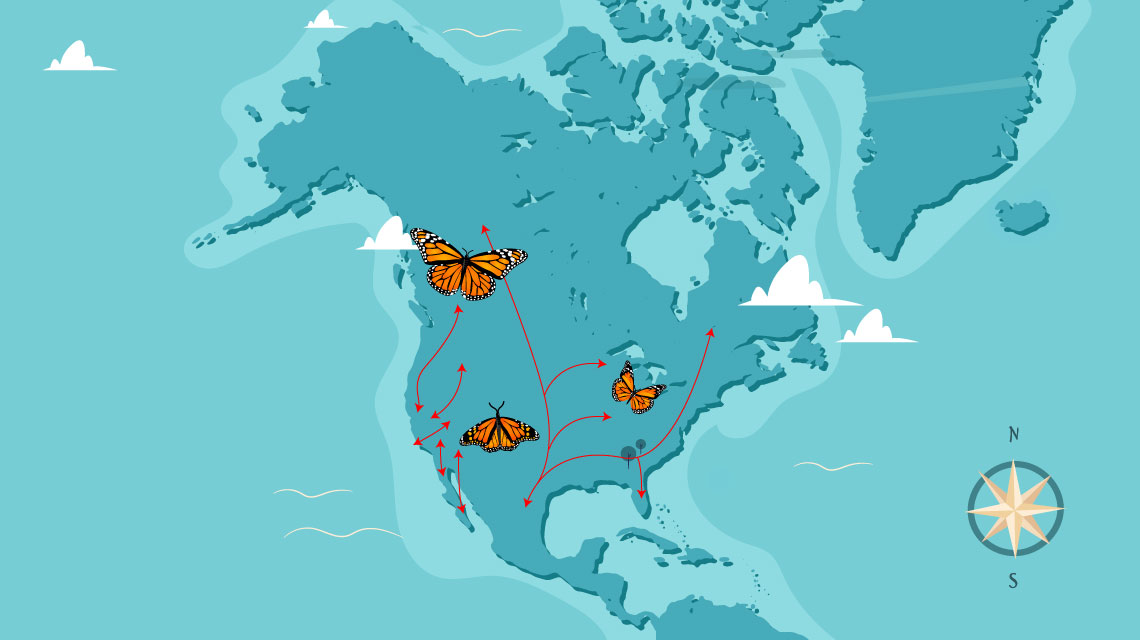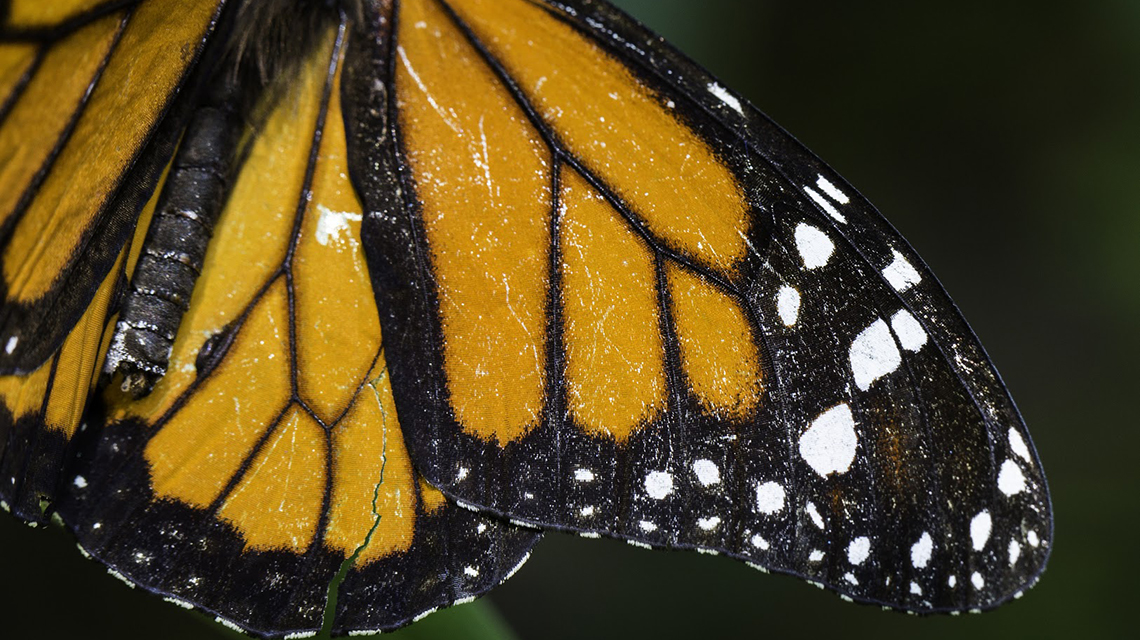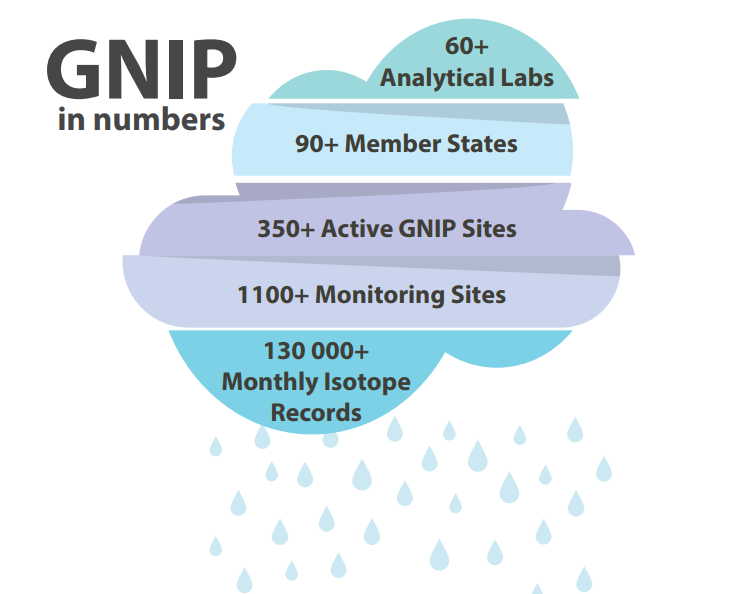Gracias a la información de una base de datos del OIEA y a las técnicas isotópicas, los expertos pueden comprender mejor los flujos y los patrones migratorios de la mariposa monarca (Danaus plexippus). Este insecto es fundamental para polinizar un sinfín de especies de flores silvestres que se encuentran en su ruta migratoria. Basándose en estos datos científicos, las autoridades pueden desarrollar estrategias para proteger el hábitat de estos insectos.
“Las técnicas isotópicas ofrecen una ventaja inigualable en comparación con los métodos de rastreo clásicos, porque no son invasivas y no obligan a volver a capturar a los mismos animales”, explica Leonard Wassenaar, jefe del Sección de Hidrología Isotópica del OIEA.
Antes de la llegada de las técnicas isotópicas (véase el recuadro “Base científica”), los métodos convencionales de marcaje y recaptura que se usaban para rastrear los movimientos de los animales empleaban marcas externas, como las anillas o el rastreo por radio o satélite, que no son adecuados para animales o insectos pequeños y de corta vida, como las mariposas.




